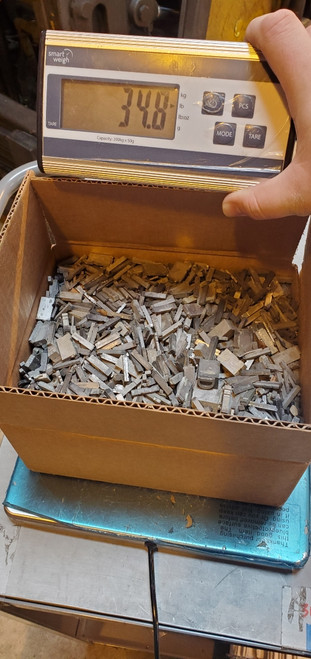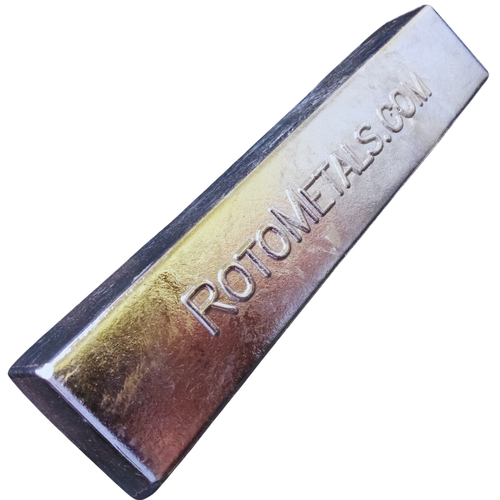But have you actually
tried it yet?
What bullets/velocities/pressures are you wanting (in that Sharps(?) )
See:
Just for grins.... Last evening I took my `86 Miroku out to see just how fast I could push pure lead (PC'd) through it: https://i.postimg.cc/gc3x1b4K/1886-Gould-Fast.jpg https://i.postimg.cc/L5f0VQBD/Lyman-457122-Gould-Pure-Lead.jpg post-1: Mirror bore on dry patch post-2: Being...
castboolits.gunloads.com
I HVE been targeting a BHN of 10 to 12, but my BHN target might have to rise a bit, as I am now trying to keep a 500g bullet supersonic as long as practical for 3 reasons:
1. To mitigate transonic effects which my Labradar logs have shown is positively occurring during bullet flight with some negative and unpredictable results.
2. I have now ordered a Shotmarker electronic target system. That system provides an incredibly comprehensive and useful array of data for each individual shot and also each group. But it requires a bullet to be supersonic in order to detect it. By increasing my muzzle velocity of the 500g bullet, I estimate (based on BC and Labradar logs, that I can keep it supersonic to at least 250 yards, maybe 300 yards. That will enable me to use the Shotmarker system for load development ladder testing and for practice sessions with this rifle, even though I want to ultimately shoot it at ranges of up to 600 meters (the limit at our local range facility).
3. Keeping the bullet velocity higher reduces the rainbow trajectory and the significant effects of even modest wind conditions.
My gunsmith has determined that my specific Pedersoli has a .4563"bore diameter, which of course merits a bullet diameter of at least .4583" for decent obturation. Having already launched the .4595" actual diameter bullet (after powder coating and sizing) at 1400 fps, I know from the accuracy results, Labradar records, and the post-session condition of the barrel bore that I have gotten good obturation and have avoided leading of the barrel so far, despite not using gas checks. I credit the powder coating for the lack of leading. But l am already at the speed threshold where prevention of leading should be a high priority. Powder coating is a tremendous help against leading, but I think running pure Lead, which has a BHN of only 5, certainly risks creating leading, and I don't want to subject my pristine barrel to any lead removal processes.
The powder coating, even at the 1400 fps muzzle velocity, is leaving only 5744 powder granular deposits in the barrel (I have verified that it IS 5744 powder, not the powder coating polymer - the granular deposits under the Lee pocket microscope have the exact shape of 5744 granules and experimentation showed that even a DRY patch removes them). No leading whatsoever. This is at BHN = 10. But, I think it might be foolish to provoke leading by using pure Lead.
The presence of 5744 powder in the barrel after firing is merely a result of the small smokeless charge (only 28.0g) in a very large cartridge, and is not a concern.
Earlier, I had been firing loads that the load tables indicate would be in the 14,000 to 19,000 maximum psi range. But now that I see the need to keep the velocity higher, I am currently at pressures that supposedly (per load tables) MIGHT be as high as 28,000 per published load tables (although I doubt the pressure is actually THAT high at 28.0g of powder), when I launch the bullet at 1400 fps. I will be keeping the maximum pressures, per published load tables, under 32,000 psi as an absolute maximum, per Pedersoli's warning in its published notes.
Note that at the current 1400 fps muzzle velocity, and the powder coating, the BHN =10 is still working great (I already am getting 1.16 MOA 5-shot groups at 164 yards and am still learning how to position and hold this rifle with its fierce recoil at that 1400 fps muzzle velocity and 500g bullet weight).
I think that most shooters would agree that trying pure Lead at these pressure and velocity levels is unlikely to produce good results. Plus, pure Lead is rather expensive and hard to get here in Canada and costlier to ship, than wheel weights and Superhard from Rotometals.
Jim G



